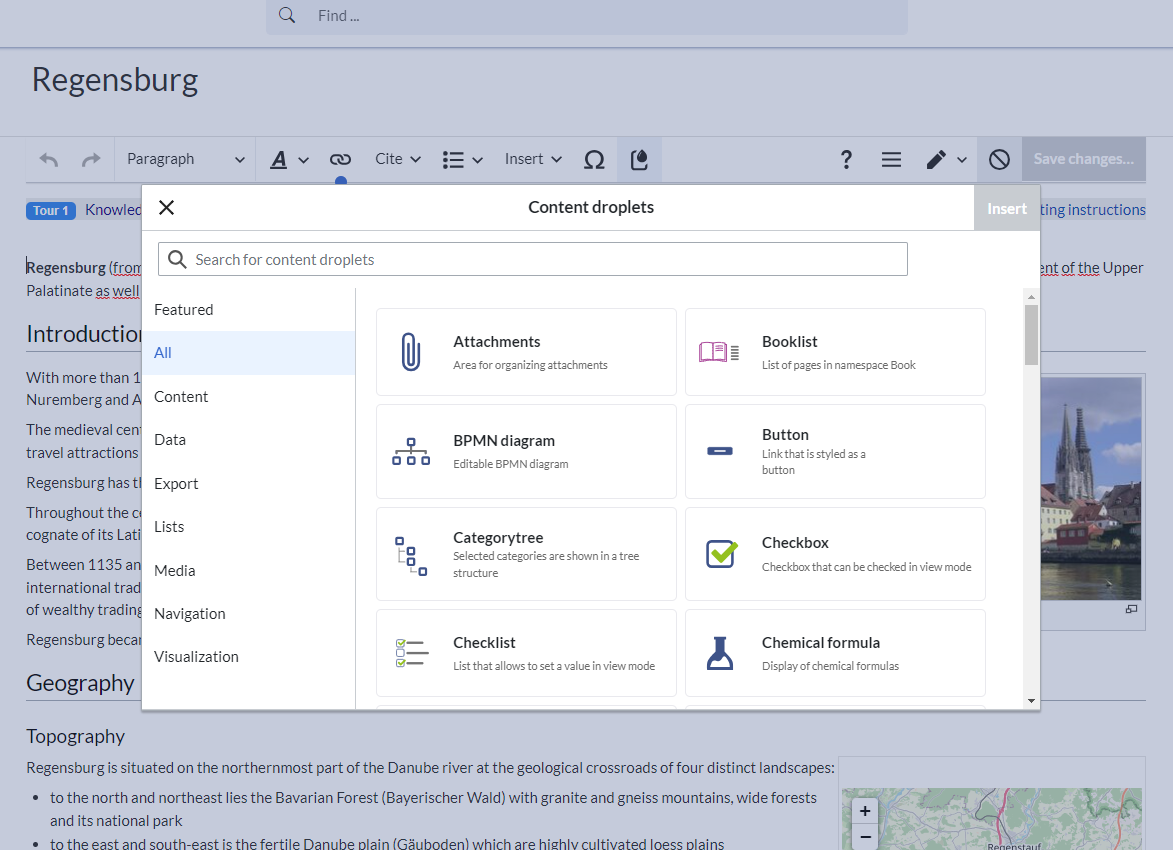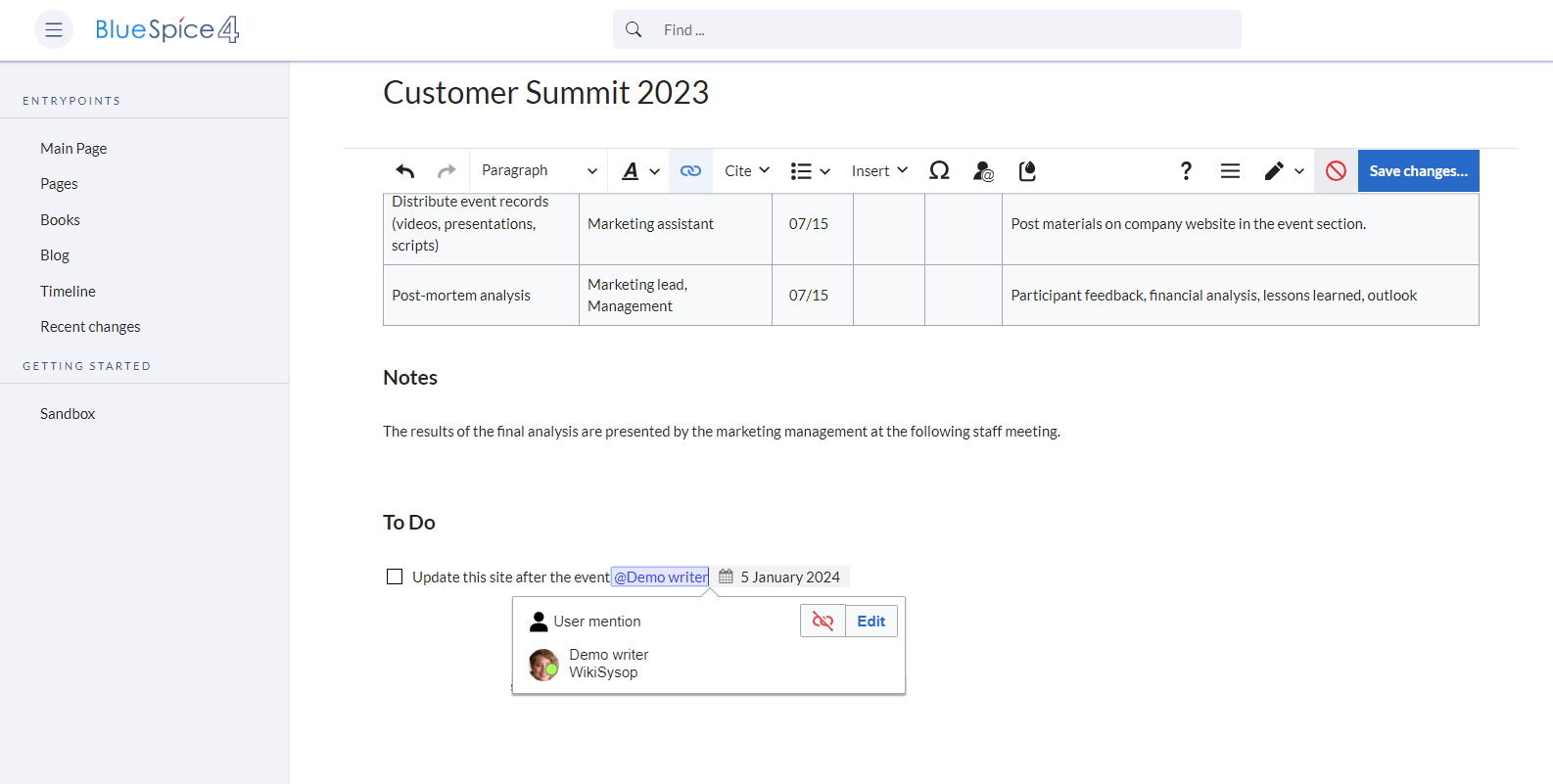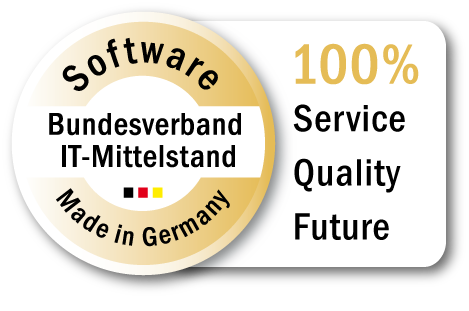MediaWiki versus Confluence?
Not a question of features
28. February 2024
When companies want to use professional wiki software, they are often faced with the question of whether they should use MediaWiki or Confluence: MediaWiki is the standard wiki software, Confluence is the top dog in the corporate environment. For a long time, features were the deciding factor, but today other aspects have come to the fore.
Please note: This is a complete rewrite as of February 2024 of the original article from August 2012.
We would like to continue to offer our readers the most up-to-date and well-researched specialist information possible and therefore reserve the right to update articles. However, if an error has crept in, please let us know.
1. The concept
MediaWiki and Confluence are initially very different products with different concepts of how knowledge is organized.
MediaWiki is the software that powers Wikipedia. The aim of the software is to make knowledge as accessible and easy to find as possible. All knowledge is therefore organized as “centrally” as possible and recorded with a fast and precise search engine.
The manufacturer of Confluence, Atlassian, had companies in mind from the very beginning and very quickly developed into a large software with many “spaces”: you can very quickly create new spaces for teams and protect them with rights so that only these teams have access to these spaces. You could say that Confluence was written to store knowledge across multiple spaces. Retrieval plays a secondary role in the Confluence world. It is assumed that teams primarily move around in their workspaces and find their content there.
The middle way: The MediaWiki enterprise software BlueSpice is based on MediaWiki and thus brings the Wikipedia philosophy into the company, but mediates between the two worlds mentioned. This means that knowledge bases can of course always be shared and protected if required.
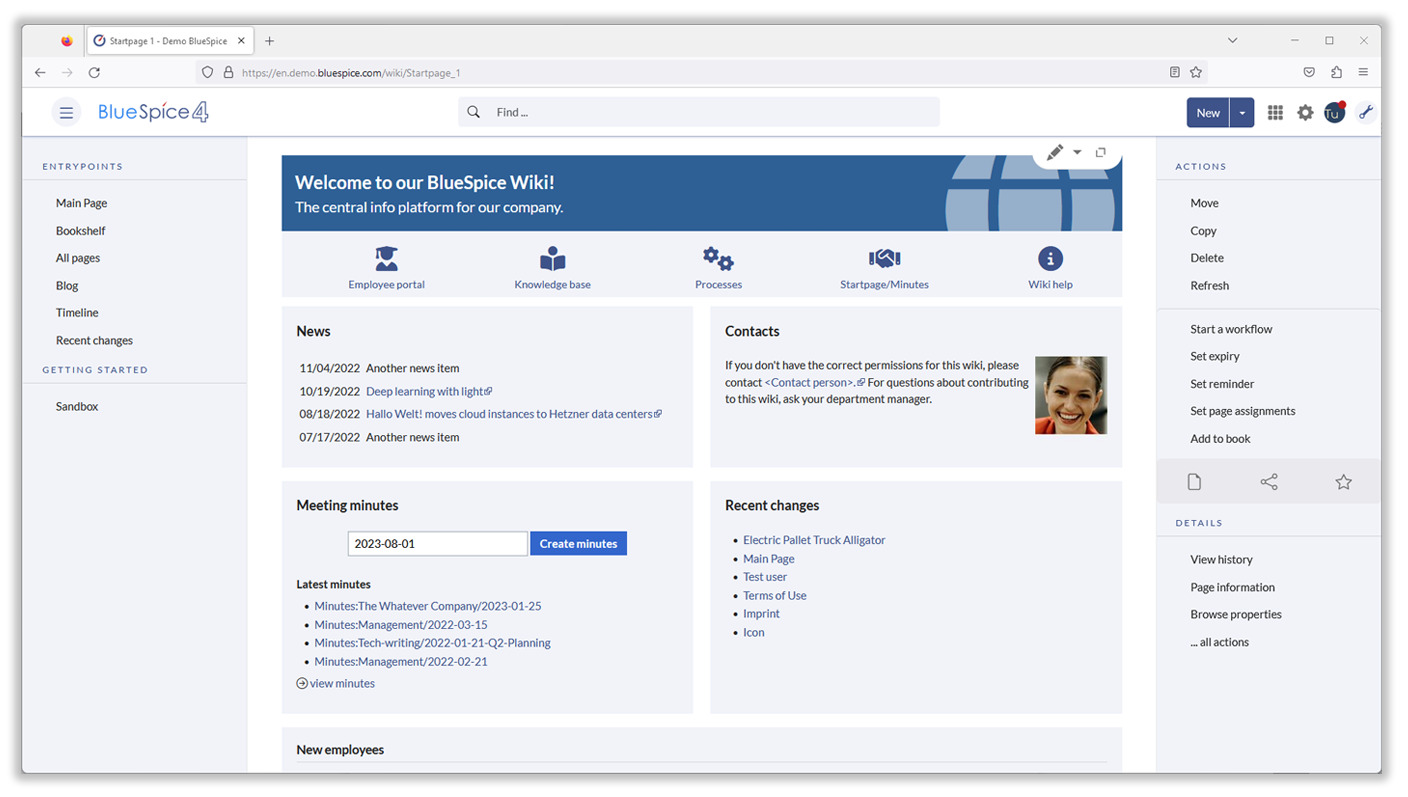
Figure 1: Clear user interface of BlueSpice, the optimal balance between MediaWiki and Confluence.
2. The pricing
MediaWiki is free software and therefore free of charge. If you need maintenance, support and services, you can find help from numerous hosters, service providers and freelancers.
Confluence has many large and medium-sized companies as customers and is therefore in the absolute high price segment. In addition to the cost of the basic software, there are usually high costs for additional plug-ins. Atlassian’s policy is also to ensure that smaller customers can effectively only buy the cloud solution. The on-premise version, Data Center, is a solution that only corporations can afford.
For this reason, many customers are now trying to switch to cheaper, alternative solutions. (See our comparison of the ten most important knowledge management tools)
BlueSpice was developed to offer customers an alternative with a very good price-performance ratio. Our medium-sized and large customers in particular have been able to significantly reduce their annual license costs in recent years.
3. Open source and compliance
Data security, data sovereignty and compliance with local laws are factors that should not be neglected.
MediaWiki is 100% open source and is developed in the public repositories of the Wikimedia Foundation. This transparency creates security and trust because many eyes are watching to ensure that the software does not “phone home”, hard-coded passwords are built in and security gaps are quickly closed.
In addition, MediaWiki is easy to install and run on your own servers. This also gives you full control over the data and data streams. This is an important factor for many industries and departments that cannot outsource their internal processes and knowledge to a cloud outside their own firewall.
It should be noted, however, that systematic quality assurance is only guaranteed for those components used by the Wikimedia Foundation in Wikipedia and its sister projects. This is not always the case for many additional extensions.
Confluence is proprietary software that, by definition, does not offer the benefits of public development. The customer has to trust the vendor and its partners with the software and cloud services, or at least set up a costly data centre to gain control of their system. The Confluence cloud is often externally certified, but the software itself remains a black box.
BlueSpice also fills the gap here. The manufacturer Hallo Welt! sees it as its task to ensure the security and compliance of the delivered enterprise software and the cloud also meets the high requirements of an enterprise service. The software is developed completely publicly and is also available for on-premises use. The offering is rounded off with the EU GDPR extension “Privacy” for compliance with legal requirements.
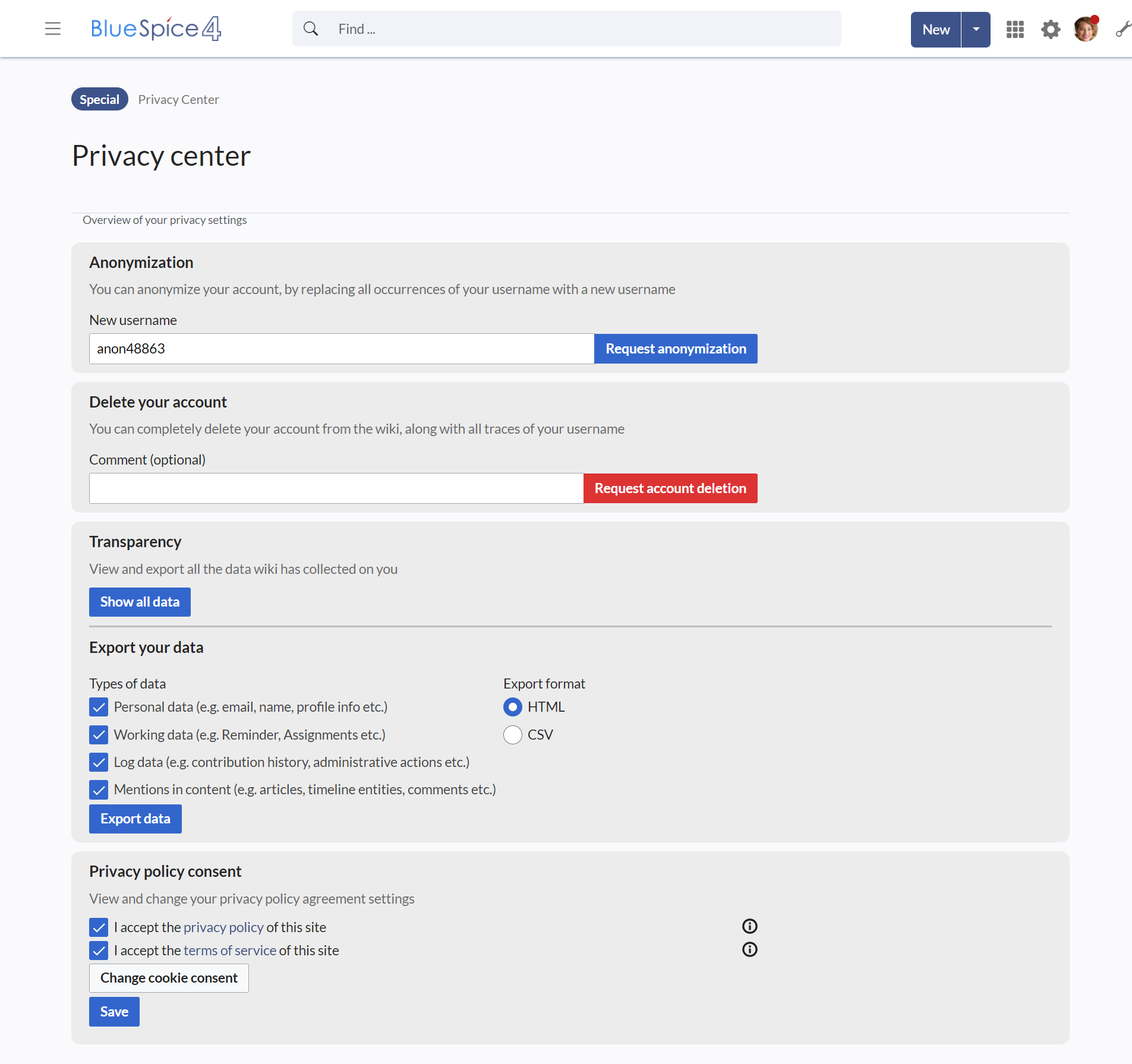
Figure 2: With the BlueSpice extension “Privacy”, also known as the data protection centre, your knowledge management system fulfils the legal requirements of the EU GDPR.
4. The combination of features
The decision for a software is of course also based on its functions.
MediaWiki is delivered with a small number of extensions. Many administrators appreciate the fact that MediaWiki is lean and can be expanded as required. One highlight of the bundle is certainly the visual editor, but even the standard search is not really useful and needs to be expanded. Important enterprise features such as a graphical administration interface are missing. Some of these are bundled and delivered in separate distributions such as Canasta or semantic::core.
Confluence undoubtedly has the edge here and comes with a considerable range of functions as standard. The focus is certainly on the management of content areas, support for editing with templates and so-called macros, i.e. the enrichment of the text area with dynamic elements. Confluence focuses on promoting collaboration in teams. The platform offers functions such as comments, sharing options and notifications to facilitate communication and collaboration.
With BlueSpice MediaWiki, the picture is different and decision-makers have another option:
- All administrative functions, from rights management to site configuration, are of course also handled via graphical interfaces and make life much easier for administrators, as they can delegate many tasks to the wiki managers.
- The visual editor is not just a 1:1 version of Wikipedia, but has been expanded and, from version 4.5, also offers the option of synchronous editing. The quick insertion of documents and images using drag & drop has long been part of the standard repertoire. Extensive Word documents can be easily uploaded and converted into wiki pages. The BlueSpice droplets correspond to the Confluence macros and make designing content child’s play. The popular mentions and a small task function round off the design options for wiki texts.
- From version 4.5, you can also be supported by an AI when creating content.
- The powerful OpenSearch is used for searching, which not only searches pages and file attachments, but is also available for connecting to other applications.
- The quality assurance functions are specific to BlueSpice, from the assignment of pages to unique page owners to a powerful and customizable workflow and approval function.
- Equally specific is working with forms and metadata (Semantic MediaWiki), which is also unparalleled in the wider market environment.
- Moving (and translating) content between individual wiki instances has made it easier to maintain the content of a wiki farm for years.
- Last but not least, the book function is not only an eye-catcher, but also a central means of providing up-to-date training materials and documentation.
It can be said that the Confluence world and the MediaWiki world do not offer the same range of functions. The products retain their own character. But they have become much closer in parts, as a detailed comparison of features shows. The “more and better features” argument has disappeared, at least in the public debate and in all market comparisons of recent years.
Figure 3: Droplets and Mentions & Tasks are just two of the many useful functions of BlueSpice. Click images to enlarge.
5. The user-friendliness and intuitive interface
Of course, the user interface and user guidance are important for the acceptance of software.
MediaWiki has significantly improved its user interface in many areas in recent years. A glance at the settings or dialogs makes it clear that great progress has been made here. Skins for MediaWiki are also appearing all the time, offering a different user experience. Nevertheless, it must be noted that MediaWiki as a whole falls short of the expectations of enterprise software.
Confluence is generally perceived as more user-friendly and intuitive. The platform offers a clear user interface that makes it easy for users to create, edit and organize content.
But here too, users’ opinions differ. Many MediaWiki fans welcome the fact that the content is at the center of attention and can be quickly grasped. They find the many functions and the Spaces system rather confusing and distracting. However, it is also true that Confluence has clearly shaped and continues to shape the expectations of an interface.
BlueSpice brings these different worlds together. An appealing and contemporary user interface is an ongoing task. It is also important to find a balance between focussing on the essentials on the one hand and the extended scope of services of enterprise software on the other. The current status can be viewed in one of the public demo systems.
6. Hierarchical navigation
The concepts of knowledge organization between MediaWiki and Confluence are sometimes very different.
MediaWiki follows the original wiki idea of making knowledge accessible through good searching and linking. This concept makes do with just a few entry points (portals). This model works unprecedentedly well and has shaken the foundations of the classic knowledge management scene for good reason. MediaWiki offers a range of structuring features, from sub-pages to hierarchical categories and namespaces, which are mainly used to store different types of pages. MediaWiki gets by with a simple basic navigation.
Confluence responds to the desire for hierarchical page structures: a hierarchical navigation structure can be created in each space to enable users to browse systematically.
In fact, there are many reasons for hierarchical structures in the corporate context. BlueSpice therefore also offers the option of setting up a hierarchical menu in each wiki conveniently and without in-depth knowledge. Alternatively, book navigation and the sub-page function are available as additional structuring options. The user therefore has the choice of what they consider useful in each case. The challenge is then rather to develop conventions on how the knowledge should be sorted.
7. Integration with other tools
A wiki can stand alone, but the success of Confluence is based not least on the fact that a knowledgebase software is also available as a supplement to Atlassian’s flagship tool, Jira.
MediaWiki can of course be integrated in a variety of ways. Mostly via the existing API interfaces or via additional extensions, many applications can be connected. A classic example of this is the MediaWiki widgets, which enable lightweight integration. Many integrations of the software naturally build bridges to the Wikipedia world, Wikidata or Wikimedia Commons and not to other applications.
Confluence offers numerous connections to business solutions such as draw.io or Slack, particularly via the apps available in the Marketplace. However, its integration with other Atlassian products such as Jira and Bitbucket is particularly impressive. This integration can provide a seamless experience for companies already using other Atlassian products.
In terms of interfaces for developers, MediaWiki – and therefore BlueSpice – is not inferior to any other system. On the contrary, it can easily keep up. And BlueSpice is in the process of closing the gaps in the MediaWiki world. Integration with the Easy Redmine ticket system has already been realized. Draw.io can also be connected, as can Lucid Charts and other tools.
8. Support and documentation
Services and documentation, on the other hand, are relevant decision criteria.
MediaWiki is probably one of the best-documented open source software projects. From the very beginning, all developments were planned and documented on MediaWiki.org, so that you can actually find something on every topic there and have to struggle relatively little through forum posts. However, the support is community-based and therefore not “reliable”. Here you are referred to commercial MediaWiki consultants.
Confluence offers professional support and extensive documentation. Support is mainly provided by Atlassian partners.
Solutions such as BlueSpice MediaWiki close the gap here as well, as publicly accessible and up-to-date documentation of their own product is a natural part of the offering. In addition to community support for the free BlueSpice version, customers receive SLAs, professional support and help with all questions relating to the software.
9. Migration
Once you have chosen your tool, the final hurdle is to migrate your existing content.
There is a migration tool for MediaWiki to migrate Confluence spaces to a MediaWiki. Here too, the various MediaWiki consultancies provide support with the implementation.
Conversely, there are tools for migrating MediaWiki content, at least within the Confluence community, and migration in one direction or the other is increasingly becoming the standard. Atlassian’s pricing policy mentioned above has led to technical upgrades being made, particularly on the MediaWiki side. Many standards are developing here.
In the first few years, the migration direction was clearly towards Confluence. This trend no longer exists today. Open source tools such as BlueSpice have the better arguments on their side today and actually only have one opponent: human inertia.
Read also
- Migration from Confluence to BlueSpice MediaWiki?
https://bluespice.com/migration-from-confluence-to-bluespice-mediawiki/ - BlueSpice as an alternative to Confluence
https://bluespice.com/products/product-comparison/bluespice-to-confluence/ - BlueSpice MediaWiki versus Confluence: The wiki alternative
https://bluespice.com/bluespice-mediawiki-versus-confluence-the-wiki-alternatives-part-1/ - Atlassian Confluence
https://www.atlassian.com/software/confluence
Author: Dr. Richard Heigl
CEO of Hallo Welt! GmbH, historian, Wiki expert and book author. Born in 1971 in Ettal (Bavaria), he now lives in Regensburg and regularly publishes on the topics of wiki, open source and information technologies.
Share This Story, Choose Your Platform!
| Except where otherwise noted, news on this site is licensed under a Creative Commons Attribution 4.0 International license. |
More BlueSpice News
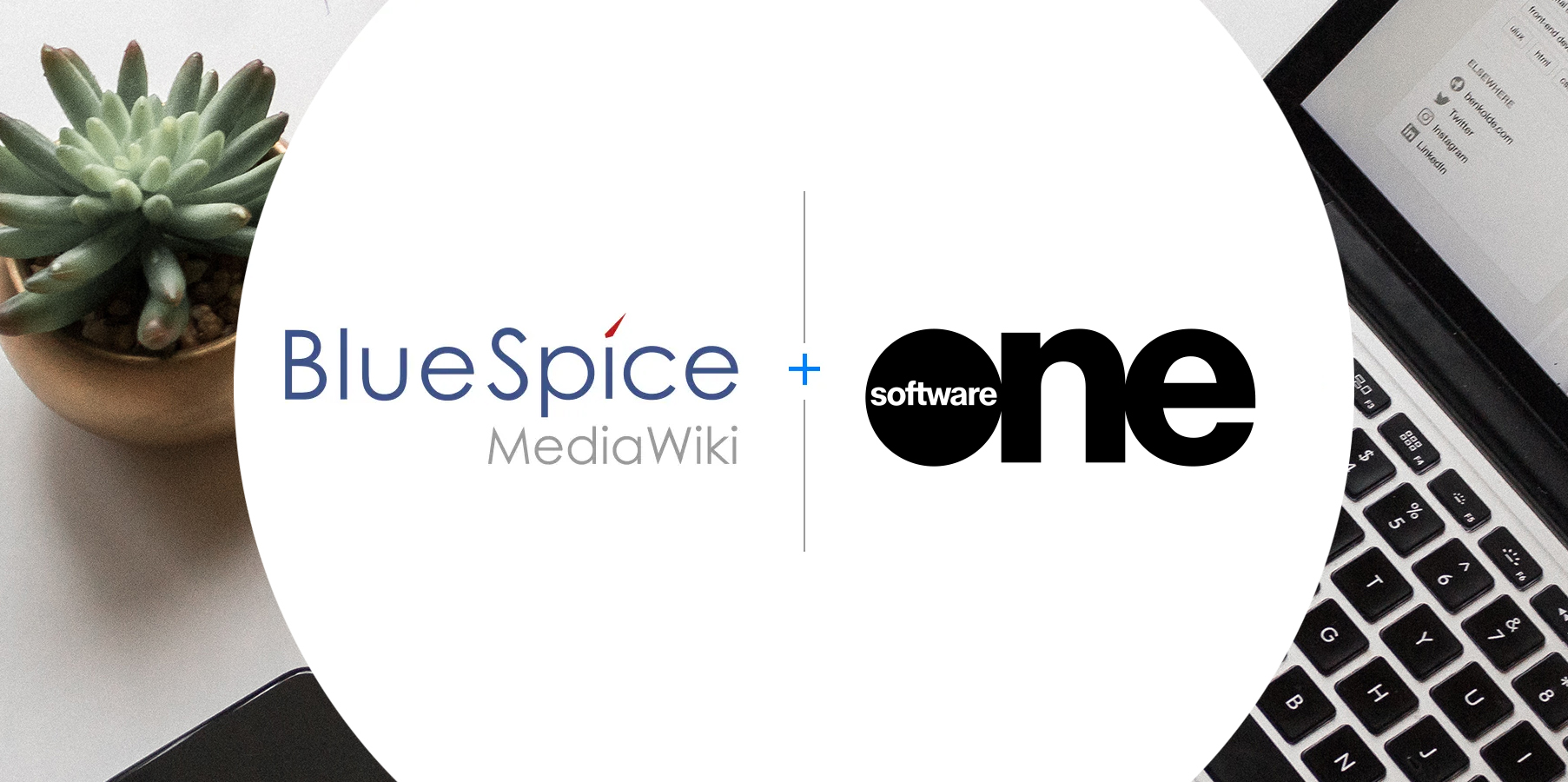
Get BlueSpice easily via SoftwareOne
23. July 2024
Start your BlueSpice wiki now via SoftwareOne thanks to our new partnership.
Read more
+
Here comes BlueSpice 4.5
16. July 2024
BlueSpice 4.5 brightens up your summer with hot new features like AI Assistant or CollabPad.
Read more
+
Hallo Welt! GmbH publishes audit report for BSI C5 criteria catalog
6. May 2024
Hallo Welt! GmbH publishes the first BlueSpice Cloud audit report for the BSI C5 criteria catalog for secure cloud services.
Read more
+

